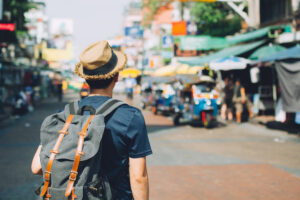A map of Indonesia could be stitched from swatches of batik. From its regional origins in central Java, where creams and browns dominate, to coastal sultanates, where international trade inspired bright colors, batik is the fabric of an evolving nation.

“It’s made and used in almost every part of the country,” says Benny Gratha, a curator at the Museum Tekstil Jakarta.
“It’s a symbol of our identity.” Visible in everyday clothing as well as in pillowcases and iPad covers, the textile technique uses a painstaking wax-dyeing process; artists dot designs by hand or use a copper stamp.
National Batik Day (October 2) marks this UNESCO-listed art form with festivals and exhibitions in Jakarta, Surakarta, Yogyakarta, and Pekalongan.
































































